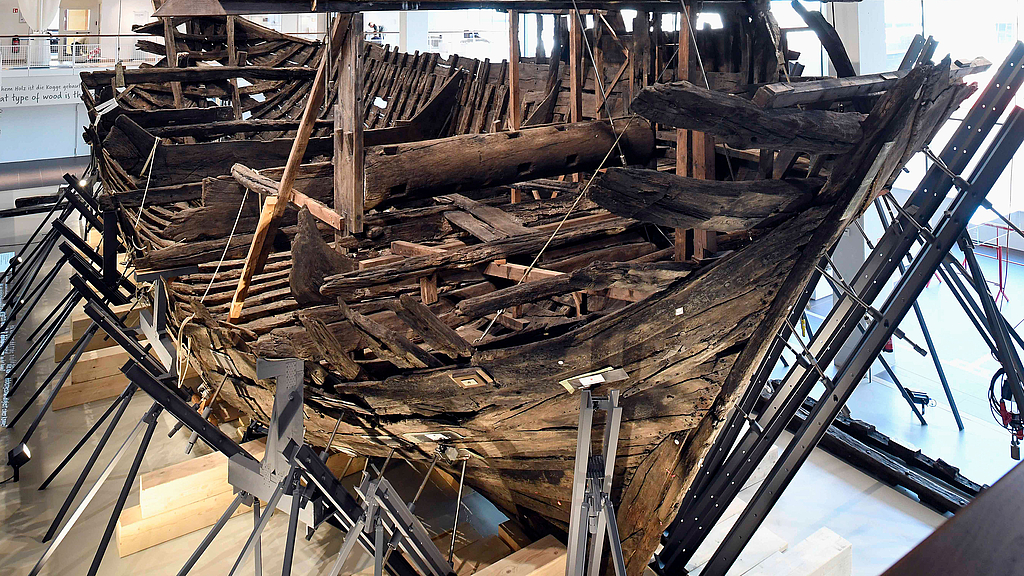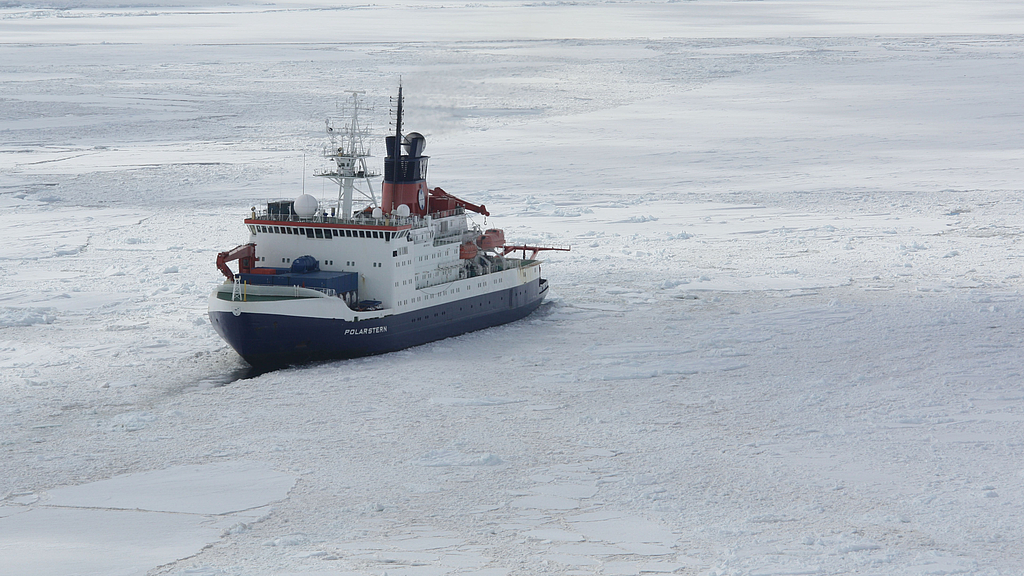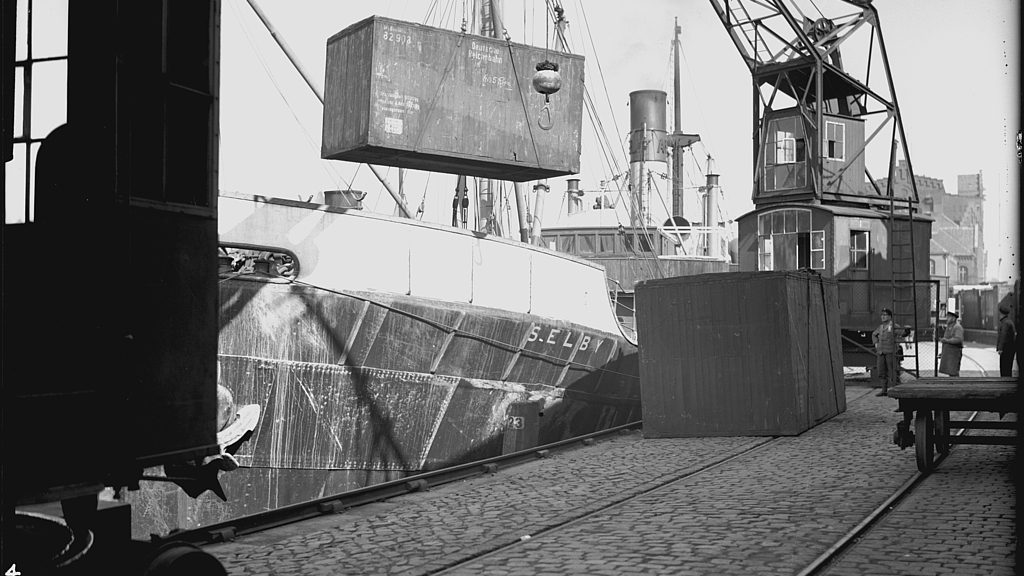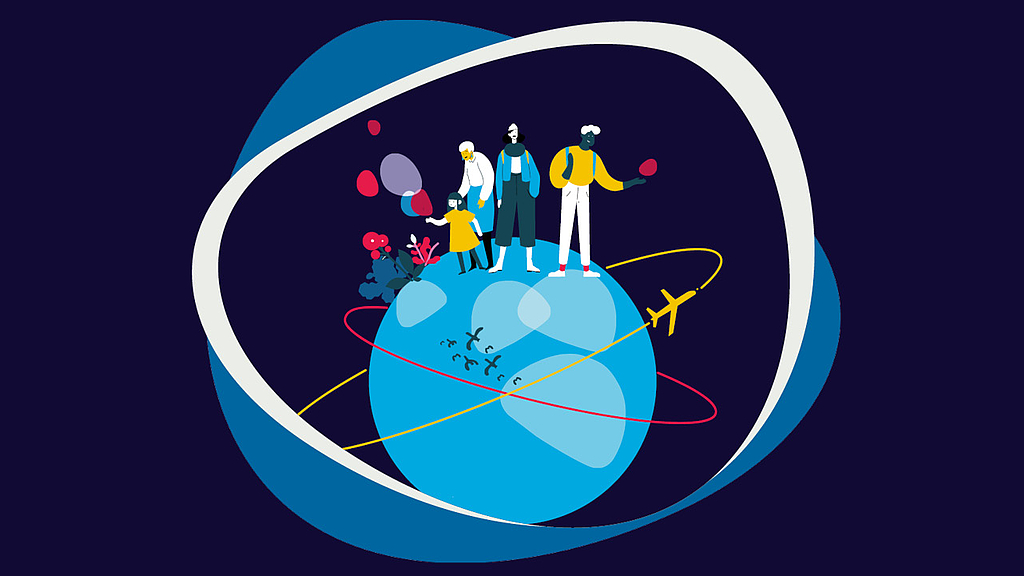A world on the move - globalization in everyday life
Thank you for your interest in the educational competition of the research museums and the FAZ! On this website you will find the fastest way to knowledge about globalization, shipping, object origin and co. at the German Maritime Museum.
Our world is on the move - often we are not aware of how far globalization already permeates everyday life. What path do the components of a smartphone take before it is purchased? Why does the label on the T-shirt of a Swedish clothing company say "Made in Bangladesh"? How much movement is there in these everyday objects? The eight research museums of the Leibniz Association deal with movement in their exhibitions and educational offerings - in the DSM, for example, with the movement of ships. They explore what drives globalization, what triggers it, or what desired and undesired consequences it brings. The educational competition picks up on this connection between globalization and museum research. Become researchers yourself, research "globalized" objects in everyday life, investigate where selected objects come from, and dream up your museum of the future. Have fun!
Contact
Leibniz coordinator at the German Maritime Museum
Christina Ziegler-McPherson
German Maritime Museum, Cog and Co.
-
The German Maritime Museum is a research museum of the Leibniz Association and a place of education and dialogue. The centerpiece of the collection is the more than 600-year-old Bremen cog. Around the restored wreck, guests learn how the merchant ship was built in the 13th century, how salvage and restoration proceeded, and how trade functioned in the age of the Hanseatic League. In the DSM continuously changing special exhibitions for the whole family in line with the motto "Man and the Sea". Inside, there are ship models, the oldest German tide calculator and other exhibits to discover - outside, historic ships and the light installation FRAME, which has already become a social media hit because young people film themselves dancing there.
Shipping and globalization
-
For thousands of years, people have used ships to conquer the world, two-thirds of which is covered by water. Today, the network of shipping routes on the oceans is denser than ever. Container and cruise ships as big as houses bring goods and streams of tourists across the seas. What impact does this have on large-scale ecosystems and climate change? The DSM takes a close look at the ship as a medium in the reciprocal historical relationships between humans and the marine environment. more
MAPS - KNOWLEDGE - SEA
-
What types of nautical and marine charts were and are there? How were they made and used? What stories are associated with the surveying of the oceans and their depiction on maps? The special exhibition "KARTEN WISSEN MEER - Globalisierung vom Wasser aus", invites you to unravel sea charts of the past, to look over the shoulders of sailors, scientists and shipowners of the 19th century, to leaf through a ship's diary or to create travel routes yourself.
SEA AND ENVIRONMENT
-
The sea has always been a place of longing, a battlefield, an economic area and a large ecosystem. What influence does shipping have on the climate and the environment? Researchers at the DSM are investigating these questions. more
Climate and sea
-
Climate change is probably one of the most important and most discussed problems of mankind at the moment. Whether it's the coal phase-out or the Fridays for Future movement: The topic is more present than ever in the media and in research. more
Origin of the objects
-
Where do the objects from the DSM come from? What are the stories behind them? The DSM is addressing this question in various research projects: LIFTProv is the name of one that asks about the whereabouts of the belongings of Jewish emigrants who left Hamburg and Bremerhaven for America in 1939, for example. Their goods were left behind in boxes - the lifts - in the ports. Provenance researcher Dr. Kathrin Kleibl shows detective-like flair and picks up the trail of the lifts.
Exhibits from overseas
-
Colonialism and the origin of objects are often connected. Many exhibits came to the museum during the times of the German Empire. Today, the DSM takes a critical look at its holdings and deals with the past. The exhibition project "Seeing the Other? The Colonialist Gaze" shows photographs of soldiers who traveled to the former German colonies during the imperial era and encountered other cultures there.
Virtual half models
-
Museum - that means objects behind lock and key from a distance? Far from it. The German Maritime Museum has opened the doors of the showcases. VR glasses, QR codes and apps have long been part of the permanent equipment. The German Maritime Museum is heading toward the future. This can be very technical: 3D ship models, 360° videos from aboard the research vessel POLARSTERN, podcasts or virtual tours. All digital offerings can be discovered here at the click of a button. There is also a separate department that thinks the topic of digitalization in the German Maritime Museum. Who knows what a digital curator does? And what does your museum of the future look like?


